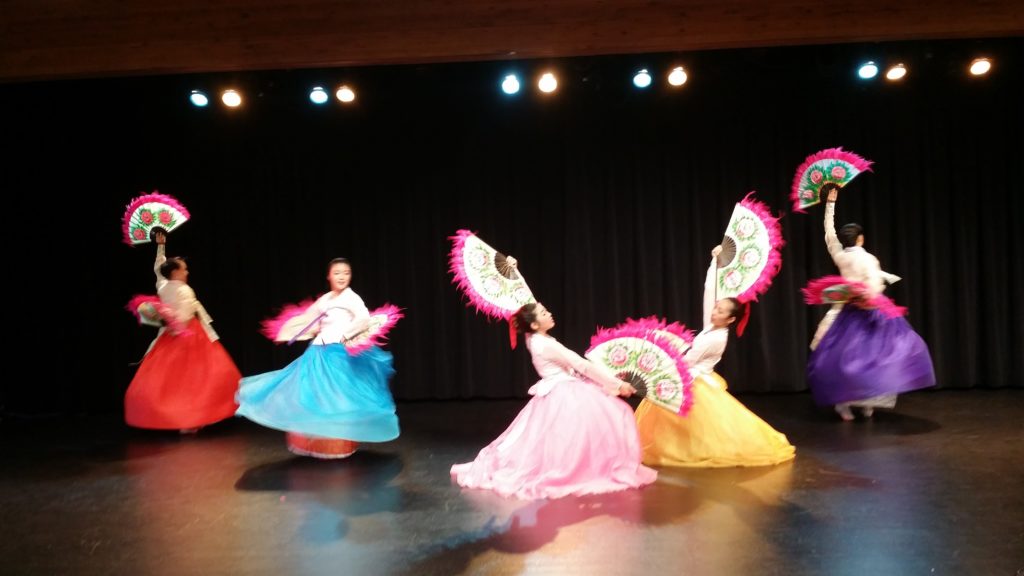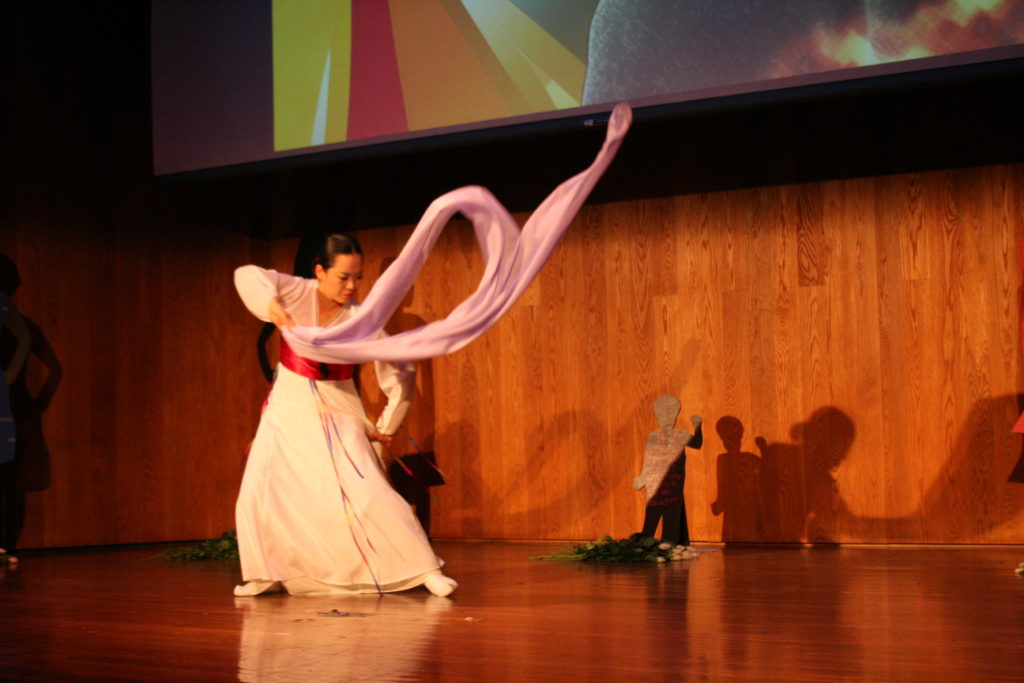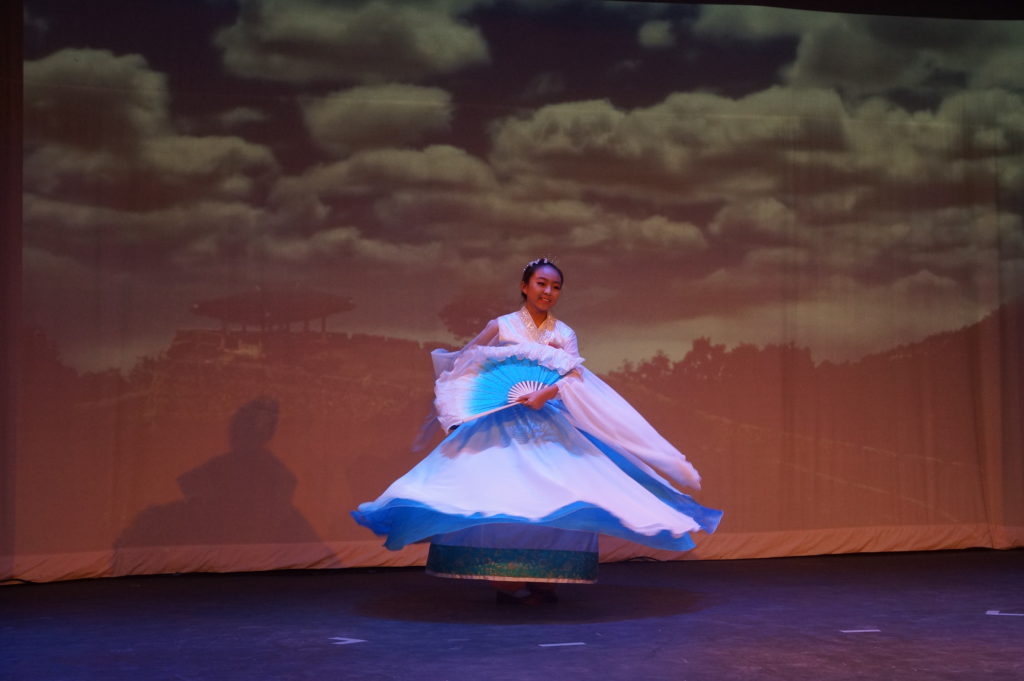Korean traditional dance originated in ancient shamanistic rituals thousands of years ago. By the time of the later Korean kingdoms, Goryeo and Joseon, in the 2nd millennium AD, Korean traditional dance benefited from regular support of the royal court, numerous academies, and even an official ministry of the government.
Due to the cultural suppression by Imperial Japan, most of the dance academies died out and some dances were lost as well as some of dance forms were distorted. However, few pioneering Korean dancers created new forms of Korean dances based on the traditional dances and kept many of the traditions alive in secret and abroad. Today Korean traditional dance is enjoying a vibrant resurgence.
Korean traditional dance shares some similarity with form of dance known as contemporary and lyrical. Moves follow a curvilinear path with little short term repetition. The dancer’s legs and feet are often entirely concealed by billowing Hanbok. Emotional attributes of the dances include both somberness and joy. The dancer must embody the fluid motion that surges through the traditional music that the dancers perform to. Korean traditional dance is often performed to Korean traditional music, which includes traditional drums, flutes, and more. The music is what upholds the dance and the dancer is the tool that shows the music in physical form.
Mask Dance
“TalChum” (Mask Dance) is a type of traditional theatre-dance where the performer covers his/her face with a mask while dancing. Korean Traditional Mask Dance is predominately interactive theatre. Many of the masks represent a specific character/archetype that’s familiar to the current political and socio-economic world. The performances often contain plot and dialogue that speaks directly to the common people’s daily struggles and protests against oppression and poverty. There are also stories of mythic creatures and traditional lore’s that have been passed down for centuries through this art medium.
Some Korean Traditional Mask Dance includes: Ogwangdae Nori (The Five Mask Play), Bongsal Talchum, and Sahgachum (Korean Lion Dance).

Fan Dance
“Boo-Chae Choom” or Korean Fan Dance, is a Modern Korean Dance performed with Fans. The Fan Dance originates from Korean ancestral worship during which the head shaman performs the ritual while holding a fan. The dance is most often performed in groups, as the choreography and layering technique of the fans produce floral patterns that are described to be elegant and entrancing. Though not a Traditional Korean Dance, the Fan dance became a common performance throughout Korea and is still cherished today.

Salpulee Dance
Considered the 27th intangible Cultural Property of Korea, the Salpulee is a ceremonial dance performed to release the audience from the pain and sorrow of life.

Urisawe Fan Dance
The Urisawe Fan Dance has been developed by Me Sook Ko and features a unique Costume and modern Arirang as the background music. See videos of this dance piece on our official Youtube Channel.
